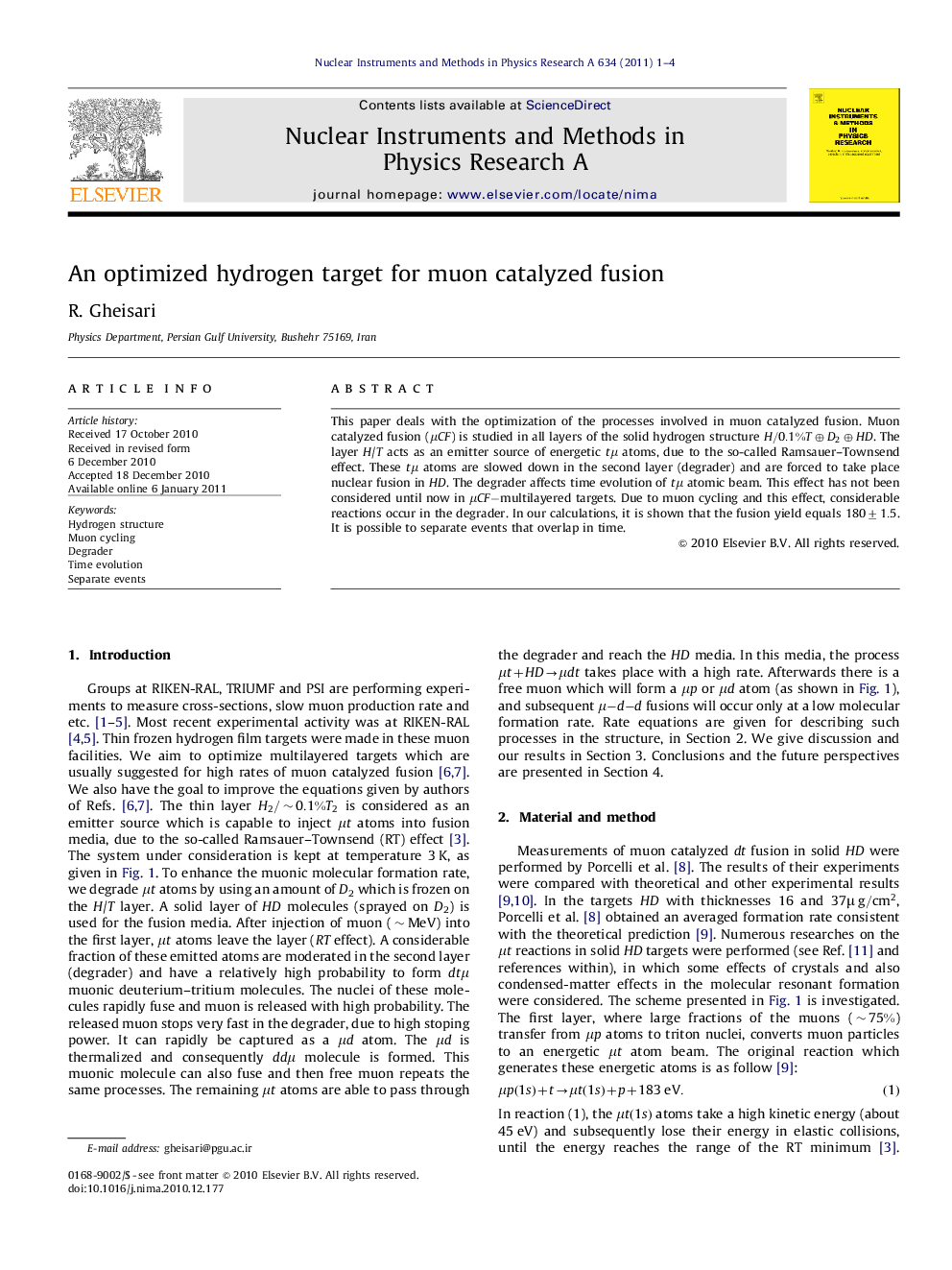| کد مقاله | کد نشریه | سال انتشار | مقاله انگلیسی | نسخه تمام متن |
|---|---|---|---|---|
| 1825946 | 1027372 | 2011 | 4 صفحه PDF | دانلود رایگان |

This paper deals with the optimization of the processes involved in muon catalyzed fusion. Muon catalyzed fusion (μCFμCF) is studied in all layers of the solid hydrogen structure H/0.1%T⊕D2⊕HDH/0.1%T⊕D2⊕HD. The layer H/T acts as an emitter source of energetic tμtμ atoms, due to the so-called Ramsauer–Townsend effect. These tμtμ atoms are slowed down in the second layer (degrader) and are forced to take place nuclear fusion in HD . The degrader affects time evolution of tμtμ atomic beam. This effect has not been considered until now in μCF-multilayeredμCF-multilayered targets. Due to muon cycling and this effect, considerable reactions occur in the degrader. In our calculations, it is shown that the fusion yield equals 180±1.5180±1.5. It is possible to separate events that overlap in time.
Journal: Nuclear Instruments and Methods in Physics Research Section A: Accelerators, Spectrometers, Detectors and Associated Equipment - Volume 634, Issue 1, 1 April 2011, Pages 1–4